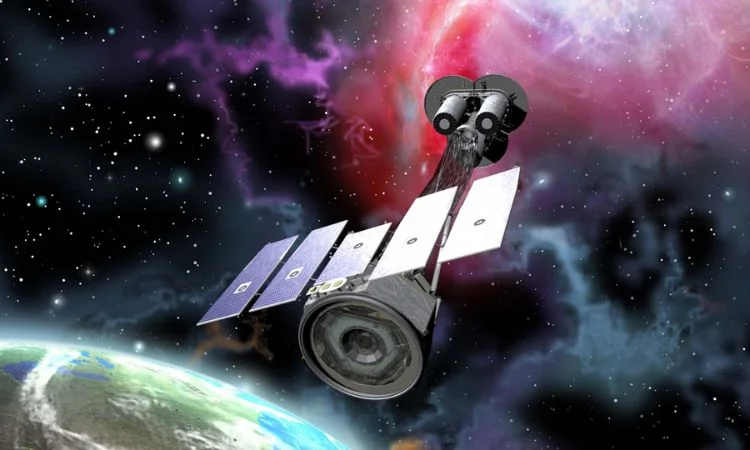Soon, the ISRO, or Indian Space Research Organization, will set out on another exciting adventure with the XPoSat, the X-ray Polarimeter Satellite mission. Its aim is to use a PSLV, the Polar Satellite Launch Vehicle, for the launch.
After the successful launch of India’s first solar observation mission, Aditya L1, this year, and the success of the Chandrayaan 3 mission, the Indian Space Research Organization (ISRO) is gearing up for another daring X-ray Polarimeter Satellite (XPoSat) mission later this month.

In the upcoming year, ISRO aims to launch numerous space investigations. These missions will help enhance India’s understanding of space exploration.
X-ray Polarimeter Satellite: What is it?
The Indian Space Research Organization created the X-ray Polarimeter Satellite. Its job? To study how cosmic X-rays are polarized. A special vehicle called the Polar Satellite Launch Vehicle (PSLV) is planned to shoot it into space.
Date of launch
The X-ray Polarimeter Satellite is scheduled to blast off on December 28, 2023. Its job? Exploring cosmic X-ray polarization.
The X-ray Polarimeter Satellite’s Objective
This satellite will be used to observe pulsars, active galactic nuclei, non-thermal supernova remnants, and X-ray binaries involving black holes. It is expected to be in service for at least five years.
X-ray Polarimeter Satellite Payloads
Polarimeter Instrument in X-rays (POLIX), the primary scientific payload, and X-ray Spectroscopy and Timing (XSPECT), the secondary payload, will be carried by the satellite.
X-ray polarimeter instrument (POLIX)
POLIX will investigate the polarization angle and degree of bright astronomical X-ray sources. The Raman Research Institute’s POLIX payload is designed to measure polarimetry characteristics in space.
ISRO began work on the XPoSat project in September 2017 with a grant of Rs 95,000,000. By September 2018, the team had completed the preliminary design review for the XPoSat, which included the POLIX payload. ISRO started working on the POLIX Qualification Model and the production of the Flight Model components after developing the preliminary layout. Approximately forty brilliant astronomical sources will be studied and data recorded by POLIX.
X-ray Timing and Spectroscopy (XSPECT)
Soft X-ray timing and spectroscopic data will be measured by XSPECT, a project of the Space Astronomy Group at URSC. The purpose of this payload is to examine soft X-rays using timing experiments. This payload’s primary goal is to correlate temporal characteristics with changes in emission lines and spectral states to better understand the long-term behavior of X-ray sources. AGNs, magnetars, low-magnetic field neutron stars (NS) in LMXBs, blackhole binaries, and X-ray pulsars will all be studied and dated by XSPECT.















